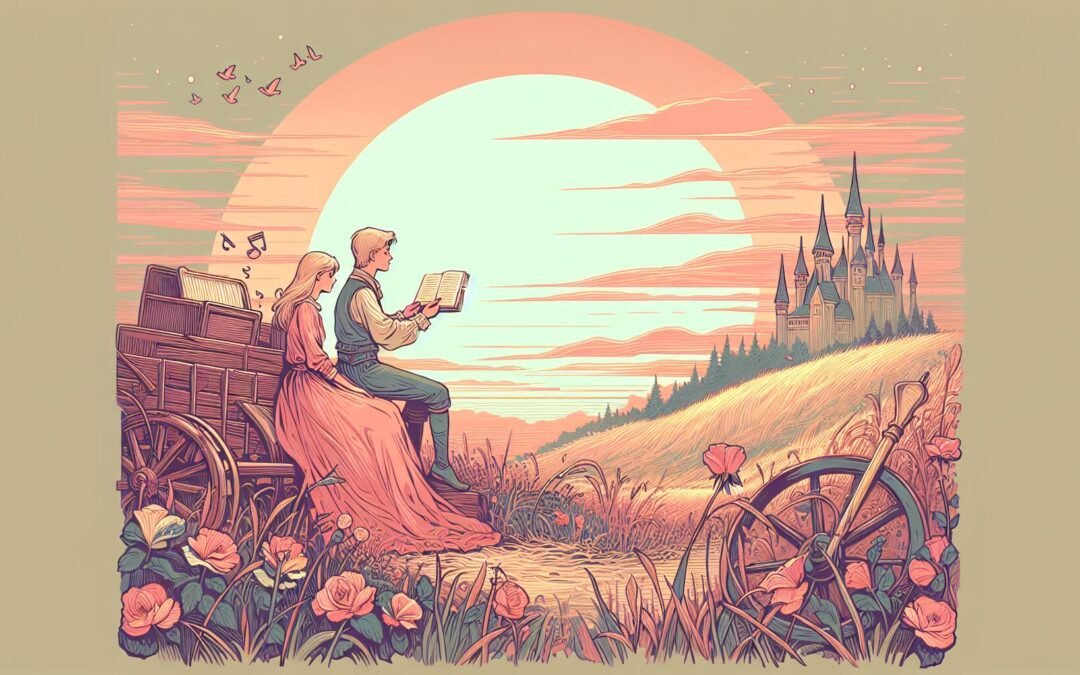Poems for girlfriend possess a lineage shaped by a cascade of history, culture, and shifting ideals. Tracing expressions of affection towards women reveals a tapestry of mythic allusions, sacred symbolism, and scenes rooted in daily devotion. For those seeking affectionately personal verses, Love Poems To Say To Your Girlfriend provides inspiration drawn directly from these enduring threads. The arc of romantic verse spans Akkadian clay tablets, New Kingdom Egyptian serenades, and the enigmatic sensuality of the Song of Songs in the Hebrew tradition. Sappho’s lyrics on Lesbos center intimacy and female agency, dissolving distance through exclamations of longing and confession. Catullus and Ovid filter this heritage with irony, wit, and bittersweet self-revelation. Tang dynasty writers like Li Bai and Du Fu intertwine yearning with beauty and melancholy, though romantic love exists within a broader poetic spectrum for them. In Sanskrit, the Gita Govinda celebrates Krishna and Radha through metaphors of passionate union, blending physicality and spiritual aspiration.
Historical and Cultural Context of Poems for Girlfriend
Romantic verse transforms as traditions and societies shift. The ways poets address women respond to cultural and literary expectations. Troubadours in medieval France cultivate the courtly lady as an object of admiration, muse, and unattainable figure, which set patterns for centuries. Persian writers in the ghazal tradition evoke desire and separation through layered imagery and rhetorical indirection that spins longing as the art’s central motif. Japanese masters of waka compose concentrated meditations, their fleeting images and emotional restraint heightening the poignancy of connection or absence; Izumi Shikibu shines here as both subject and author. In sonnet sequences, writers from Petrarch to Shakespeare distill longing, adoration, frustration, and reflection, generating a pattern where affection becomes introspective and the beloved both agent and mirror.
Across these works, the beloved woman frequently occupies an ambiguous space. She is praised for beauty or virtue but, within patriarchal conventions, seldom granted complete voice or narrative authority. Cultural contexts shape how desire is rendered. Chinese traditions stress harmony of romantic longing with familial duty, while Persian, Arabic, and Urdu poets enrich love poetry with paradox and layered allusion. European medieval and Renaissance poets interweave devotion with religious and spiritual metaphors, sometimes hallowing or suspecting desire. In Victorian England, poetics idealize femininity, yet writers such as Elizabeth Barrett Browning and Christina Rossetti articulate independent voices within the constraints of their era; for more on these expressions, For Girlfriend explores these nuanced depictions. In the twentieth century, poets like Forough Farrokhzad, Anna Akhmatova, and Maya Angelou speak directly to inherited roles, challenging expectations and illuminating the complexities of love, identity, and address.
Contemporary love poetry addressed to women adapts and resists both cultural pressures and literary inheritance. Verse shapes and reshapes themes of admiration, longing, and attachment in response to changing realities. Shifts in gender roles, broader social emancipation, and the personal as political all inflect how affection appears in lyric form. Exploring Love Poems For Girlfriend will reveal some of these modern transformations. Romantic poetry remains a laboratory for self-exploration, confession, and renewal, finding new language for ancient feelings.
Thematic Craft and Language in Poems for Girlfriend
Writers sculpt poems for girlfriend by foregrounding admiration, desire, and the urge to celebrate daily intimacy. Through distinct images and precise language, verse brings the girlfriend’s particular presence into focus. Descriptions of lips, eyes, laughter, scent, or familiar gestures layer physical and emotional meaning. Readers searching for concise and personal verses will find that Short Poems For Girlfriend distills these motifs without abstraction. Simple acts morph into emblems of affection; a shared joke, a borrowed sweater, or a moment of mutual silence becomes proof of connection. The focus on small details dramatizes ordinary experience, where a gaze over breakfast or a hand held in a crowded street carries understated urgency.
The ache of longing permeates the diction and line structure. Absence or distance activates sharper perception—a voice on the phone, a missed evening, or the quiet after disagreement all feed the poem’s emotional core. Poets dramatize separation’s vulnerability by highlighting uncertainty, anticipation, and hope. In apology verses, honest self-assessment leads to requests for forgiveness and deeper understanding. Language becomes reflective, emotion arcs from remorse to cautious optimism, and the couple’s shared future hangs in the balance. For readers interested in playful or uplifting works, visit Poems For Girlfriend To Make Her Smile for samples that brighten and reassure.
Celebratory poems transpose anniversaries, reconciliations and other personal milestones into a collective language of resilience. Metaphor shapes these verses: the girlfriend as anchor, light, compass, or the spark animating dull routine. Evoking the cosmic, the mundane, the quirky, and the familiar, poets avoid cliché by making metaphors serve narrative and intimacy. Instead of repeating tired imagery, a girlfriend might become a half-remembered lyric, a patch on a jacket, or a cup of coffee left warm on a desk. This specificity cultivates authenticity; the language of love resists formula and makes feeling visible.
Intimacy blooms through careful attention to the distinctive. Rather than pursuing some imagined perfection, the poem acknowledges quirks, flaws, and the unpredictability of affection. Beautiful Poem For My Girlfriend highlights how singular details anchor emotional truth and render love both credible and alive. The poem’s emotional range widens as it turns from idealization to honest witness.
Voice, Tone, and Form in Poems for Girlfriend
Tone in modern poems addressed to a girlfriend moves from humor and exuberance to awe or quiet melancholy. Playful language, teasing exaggeration, and puns conjure the levity of new affection, whereas clarity and spareness can evoke solemn declarations. Direct address collapses the gap between speaker and beloved, heightening immediacy through “you,” “we,” and uniquely personal nicknames or shared codes. These signals of intimacy separate generic praise from genuine connection, as found in Poem To Write To Your Girlfriend where language is tailored for private worlds.
Poets adapt form to suit intent. The sonnet’s constraint channels longing and contradiction, while the ghazal’s recurrence mirrors the push and pull of recurrence and memory. Japanese tanka and haiku concentrate emotion into fleeting sensations, transforming quick gestures into fixed points of recollection. Free verse enables improvisation, abrupt confession, and the layering of tones and registers; contemporary poems for girlfriend frequently blend formal variety with relaxed speech. Wordplay, repetition, and meter surface as both homage and reinvention. For more inventive forms, Romantic Poems For Girlfriend showcases playful and unconventional stylings.
Colloquial and digital registers ripple through current verse. Text lingo, emojis, meme references, and linguistic code-switching mark poems situated in the present moment. By switching between casual and formal modes, poems gain vitality and authenticity. Language thus becomes a record not only of affection but temporal and cultural contingency.
Dialogue between emotional vulnerability and narrative control animates strong love poems. Moments of confusion, awe, or fear surface in the white space between lines, articulating risk and desire without recourse to overstatement. The best Poems For Your Girlfriend trade posturing for the hesitant, hopeful, or even contradictory truths born of real partnership.
Digital Innovations and the Present of Poems for Girlfriend
Technological shifts recast how poems addressed to a girlfriend are shared and constructed. Social platforms such as Instagram and TikTok serve both as gallery and studio, enabling creators to publish instantly for broad or intimate audiences. Micro-poems and image-rich compositions gain traction, their brevity and clarity engineered for scrolling eyes and moments snatched between messages. The private poem, sent via DM or embedded in a meme, recalls the spirit of handwritten notes while exploiting new visual devices. To craft poems that exhilarate through brevity, try Short Love Poems For Girlfriend for fresh digital-friendly inspiration.
Poets and readers now experiment with multimedia artworks. Video backdrops, moving text, and mixed-form collaborations mingle with traditional romantic language, layering visual and sonic sensation atop the written word. Through this convergence, the boundaries of love poetry expand, accommodating changing habits of attention and expression. New forms allow verses to embody sincerity, wit, nostalgia, and playfulness in forms legible to today’s audiences.
Literary organizations and communities have also adapted to online modes. For those interested in traditions and innovation, resources from Poets.org and the Academy of American Poets present annotated collections, workshops, and explorations of modern romantic verse. Another touchpoint, Poetry Foundation, curates thematic groupings and critical essays that expand understanding of evolving trends in love poetry and the spoken word.
The convergence of personal testimony, shifting forms, and new modalities ensures that poems for girlfriend remain both an heirloom art and a renewable language for evolving relationships.

